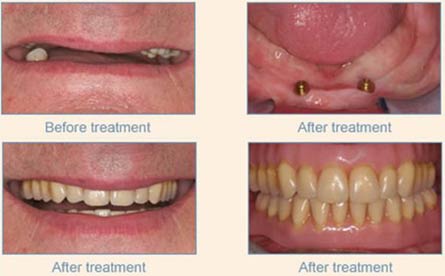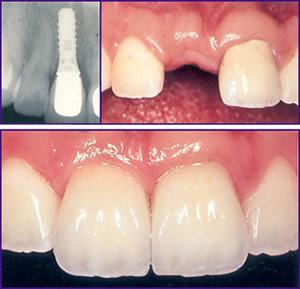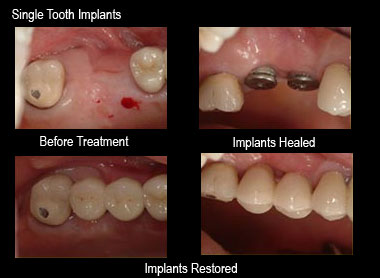|
PROSTHODONTICS
:
Prosthodontics is the dental specialty pertaining to the diagnosis, treatment planning, rehabilitation and maintenance of the oral function, comfort, appearance and health of patients with clinical conditions associated with missing or deficient teeth and/ or oral and maxillofacial tissues using biocompatible substitutes. It includes the specialty of implant, aesthetic and reconstructive dentistry.
Restoration of oral function is done through prostheses and restorations (i.e., complete dentures, crowns, implant retained/supported restorations). Using state-of-the-art procedures, the prosthodontist is often viewed as the “architect” of a restorative dental treatment plan.
Work is done closely with the patients to develop a comprehensive treatment plan and to help patients understand what improvements are possible particularly for partially or completely edentulous patients. A prosthodontist is typically the key treatment planner. Prosthodontic treatments are designed to produce a balance between functionality, longevity and esthetics.
Prosthodontic treatments include the following:
· Dental Implants.
· Flexible Dentures.
· Removable Complete Dentures are full-mouth teeth replacements designed for edentulous people. Complete dentures help people who have lost all their teeth due to trauma or poor oral hygiene, giving them better chewing abilities in addition to a more appealing appearance
· Removable Partial Dentures are designed for partially-edentulous people.
· Fixed Partial Dentures are designed for partially-edentulous people which provide the most natural results.
· Ceramic and Metal Ceramic Dental Crowns are prosthetic teeth designed to repair damaged teeth. Crowns are typically forged from metal, porcelain or a combination of metal and porcelain materials.
· Dental Veneers and Other Bonded Restorations are used to create bright, white smiles with beautifully shaped teeth.
Esthetic Reconstructive Dentistry is the most advanced approach to providing fully or partially edentulous patients with the highest level of implantology treatment.
Providing treatments for jaw problems caused by temporomandibular joint disorder
(TMD) and reconstruction following treatments/ surgery for oral cancer.
Missing Tooth Replacement Using Dental Implants
: Dental implants are used as an alternative to bridges to replace lost tooth/teeth. A titanium implant is set in the toothless area of the jawbone. The jawbone fuses with the titanium surface providing a strong anchorage for the implant. The implant functions as a support for the dental prosthesis – like a ceramic crown – constructed over it. Whether for a single tooth or replacement of all of a patient’s teeth, dental implants are now recognized as standard treatment for a complete range of teeth problems.
The dental implant procedure begins with a thorough diagnosis and treatment planning. A recipient site is created in the jawbone with drilling instruments and the implant is inserted into it. In most cases, a healing period of 3 to 6 months is required for the jawbone to fuse with the implant. After this healing period, the prosthesis is constructed over the implant.

 
Multiple
Teeth Replacement Using A Bridge :
Over
Dentures Are Given By Retaining Some Of The
Natural Teeth :
Flexible
Partial Denture :

|

















